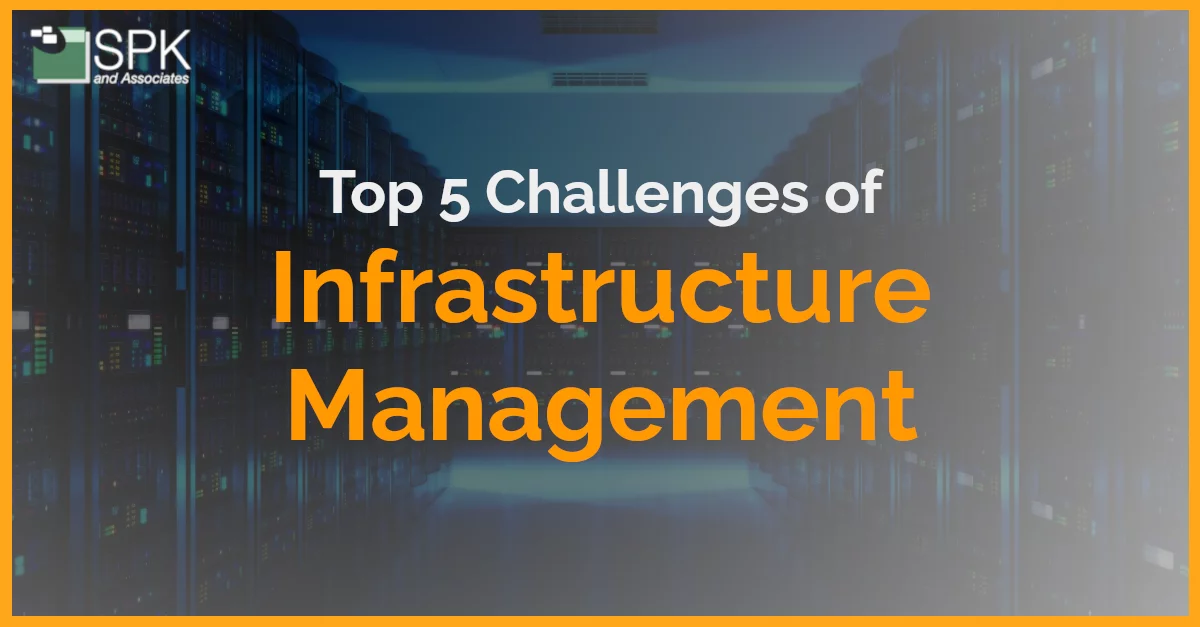Managing infrastructure comes with unique challenges. Lab network, computer farm, load-balancing app, build-and-release system – each is distinct. “IT” is a broad term, but it comprises separate realms that are easily overlooked. But, understanding the uniqueness of infrastructure is important because good infrastructure systems are seamless and go unnoticed. And because of this, you could be facing unforeseen challenges. Here are the top five challenges of infrastructure management.
What Are The Challenges Of Infrastructure Management?
1. Infrastructure Is Invisible (Mostly!)
Infrastructure, as a widely recognized concept, often masks its true meaning: the underlying structure supporting everything above it. And, due to its intentional invisibility users rarely contemplate its existence. This is beneficial. Efficient infrastructure empowers applications and allows end users to concentrate on their tasks.
As a result, most individuals in an organization, including front-office users and key stakeholders, possess limited knowledge of infrastructure. When your infrastructure team or provider excels, it remains discreetly behind the scenes.
2. Everyone Needs It
If the infrastructure fails, everything and everyone relying on it will come to a halt. Whether you realize it or not, if you work in any decently-sized company, you heavily depend on infrastructure right now.
Creating highly available environments is a difficult task. It requires knowledge across a variety of technical areas. For example, networking, virtualization, server hardware, and security. Deep knowledge of the application is necessary as well.
This means that managing infrastructure is not a task for amateurs, casual attempts, or outdated setups. In fact, you need:
- Someone who thoroughly understands infrastructure processes.
- Someone who is capable of ensuring its smooth operation and efficiently restoring it when problems arise.
- The right plan and resources. This may include expanding the IT team or seeking expertise through outsourcing.
3. When Infrastructure Breaks, Users Become Aware it Exists
When infrastructure fails, everyone suddenly becomes aware of it and demands immediate fixes. It’s understandable; we’ve all experienced the frustration of a broken car, phone, or air conditioner that we usually take for granted. We want it repaired promptly.
However, with infrastructure, the situation can be even more challenging. Since it typically works flawlessly, you might not have IT contingency plans in place. It has always functioned smoothly. Until this moment.
4. User-Unfriendly Interfaces
Infrastructure is typically designed by specialists for specialists, with the expectation that end users won’t have to handle it. The focus of end users should be on utilizing the applications and processes supported by the infrastructure. Infrastructure interfaces are predominantly developed by individuals experienced with similar specialized interfaces, as unfamiliarity can lead to unexpected surprises.
Comprehensive documentation and effective planning are crucial to minimize issues when interacting with infrastructure interfaces. Good infrastructure aims to provide stability and reliability, and proper documentation helps specialists and IT professionals understand the system and interface, reducing surprises.
Infrastructure as a Code (IaaC) has its own challenges but offers significant benefits compared to traditional setups. It allows the creation of complex environments that are repeatable and predictable, with stronger change control. Additionally, IaaC is also hardware and cloud provider agnostic, providing flexibility. However, adopting IaaC may require learning new frameworks, and setting up simple things can be time-consuming. Partnering with an expert in IaaC can be beneficial.
5. The Devil Is In The Detail
Infrastructure systems are devil-rich environments filled with potential pitfalls, even for experienced professionals. However, this complexity is actually a deliberate design feature, not a flaw. The purpose of good infrastructure is to keep the complexities hidden from end-user applications, ensuring smooth operation.
- Good infrastructure keeps the devils down below, safely away from end-user applications.
- Build and versioning systems are in place to handle the intricacies of tracking and managing version details. This relieves users from having to deal with it directly.
- Computer farms enable extensive computer number crunching without requiring users to concern themselves with the specifics of the underlying infrastructure.
Nevertheless, the smooth operation of end-user applications comes at a cost. It means that numerous technical intricacies and potential issues are relegated to the infrastructure layer, lurking and waiting to cause trouble. Moreover, budget constraints pose an additional challenge as you must meet specific environment requirements while staying within a limited budget.
That means, it also goes beyond the problems of confusing interfaces and into the realm of sheer complexity. Therefore, a good set of documents, a good wiki, and smart recruiting and training can help you keep the devils where they belong.
How To Fix The Challenges Of Infrastructure Management
While each challenge can be addressed, the first step is acknowledging their existence. That means you can eventually minimize the need to worry about infrastructure issues again. Additionally, there is huge value in having the right skills, expertise and documentation to quickly resolve challenges when they arise. In doing so, you will minimize business risk, downtime and workforce frustration.
Need Support With Infrastructure Management?
Partnering with an experienced Managed Services Provider (MSP) will alleviate the challenges of infrastructure management for you.
Contact our team today to overcome your infrastructure challenges.






